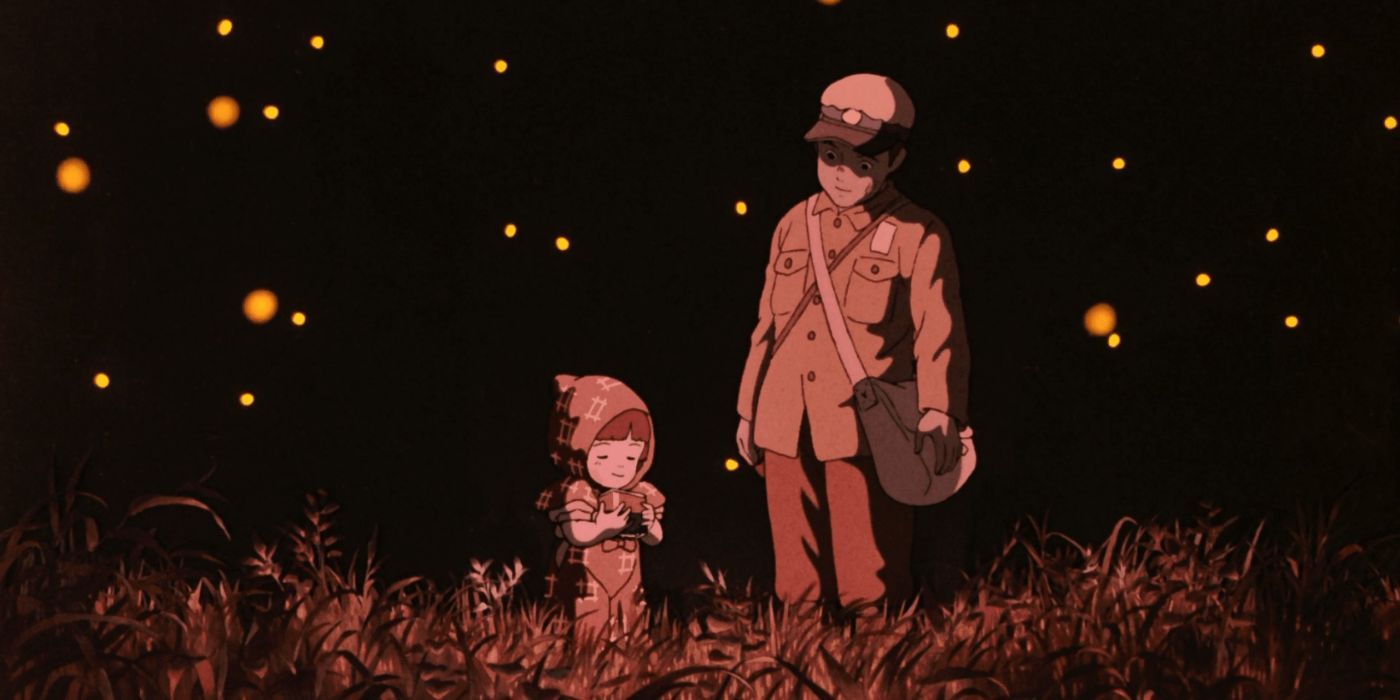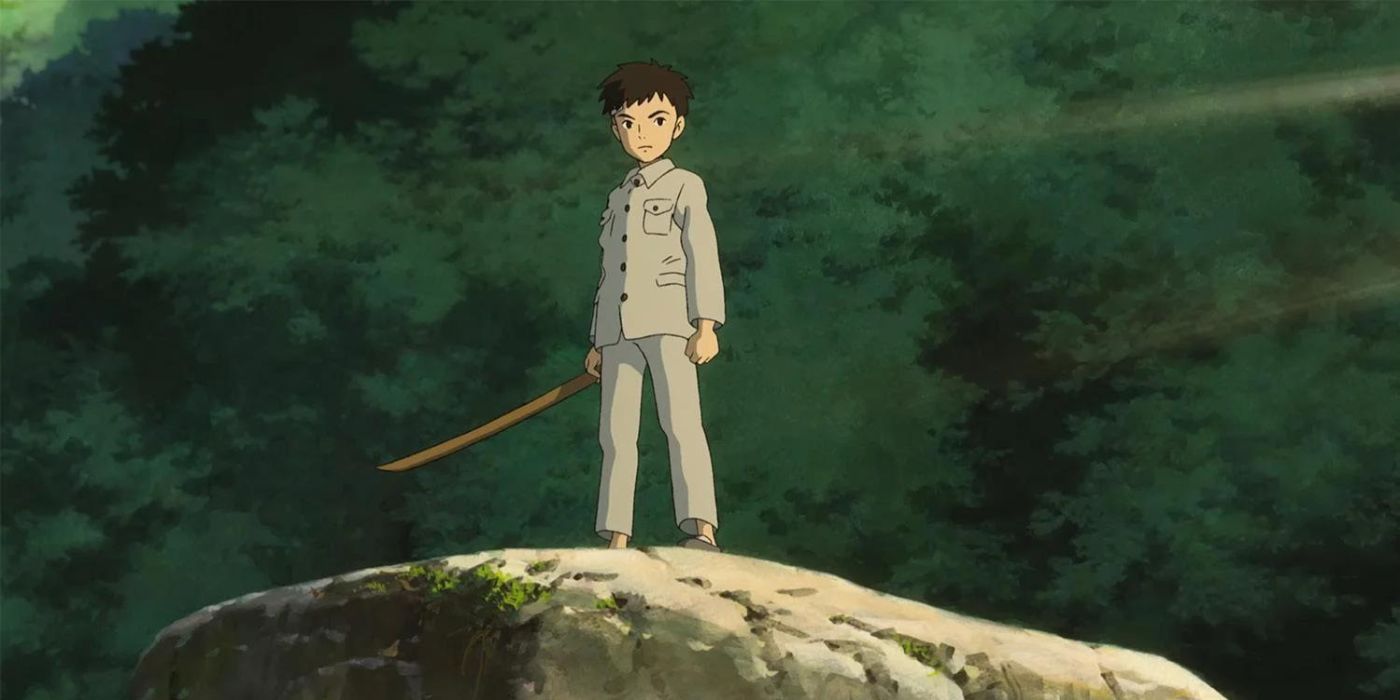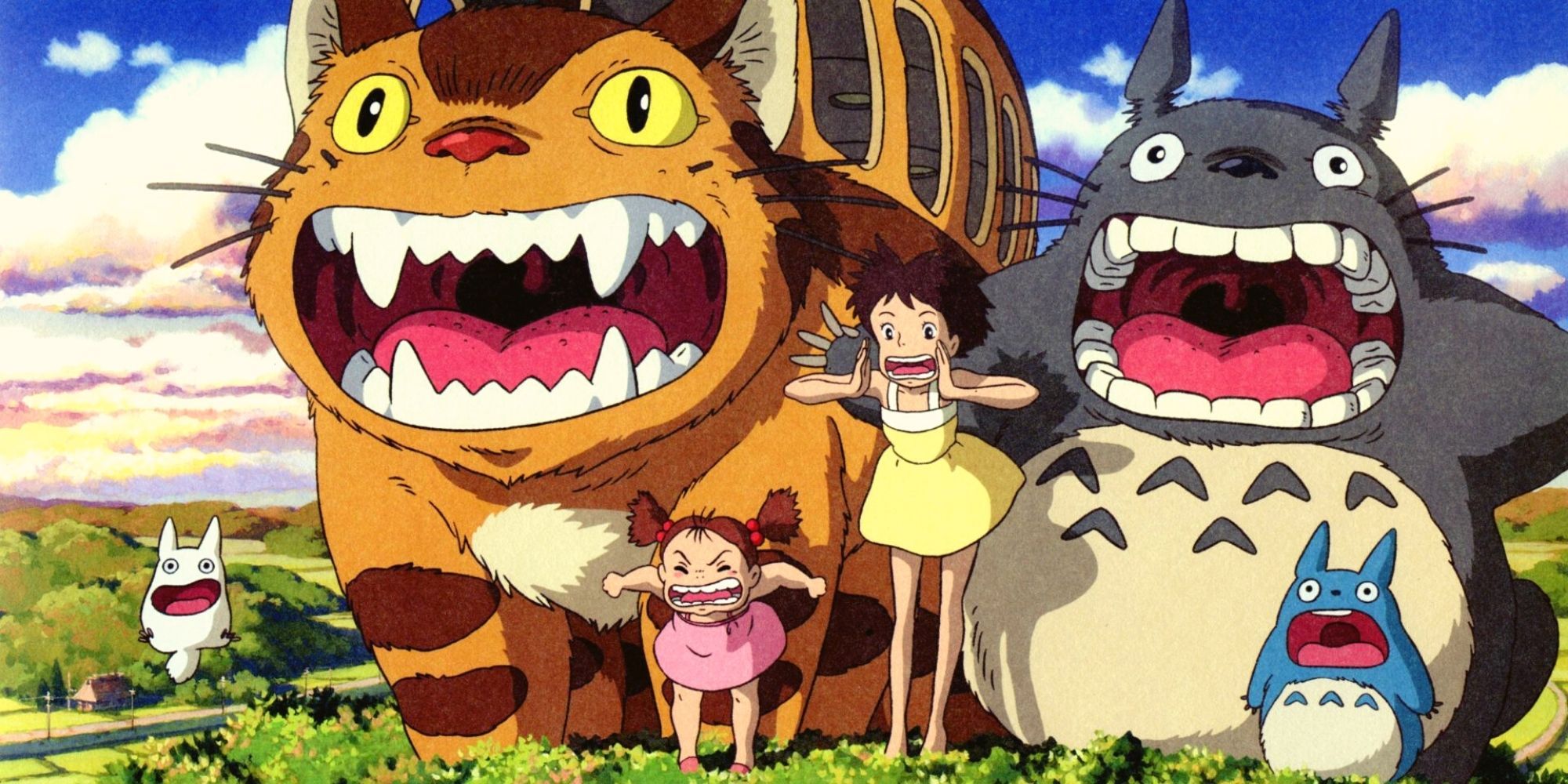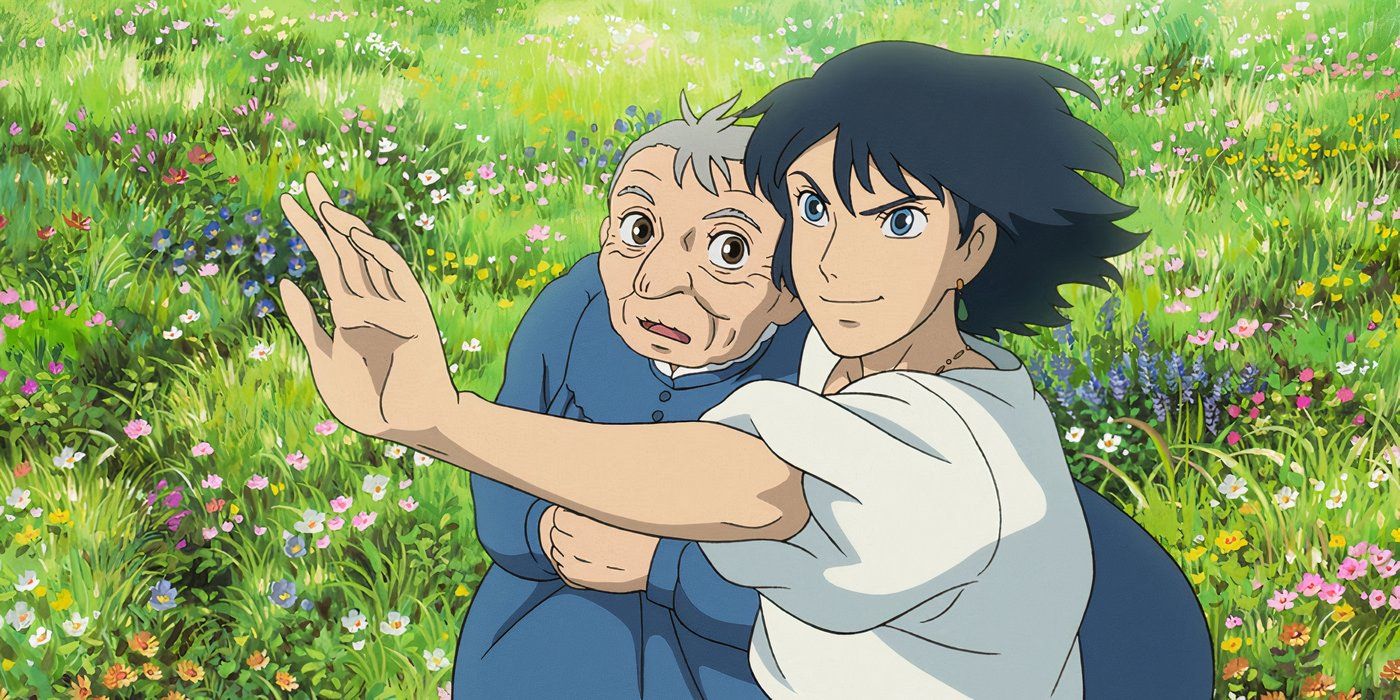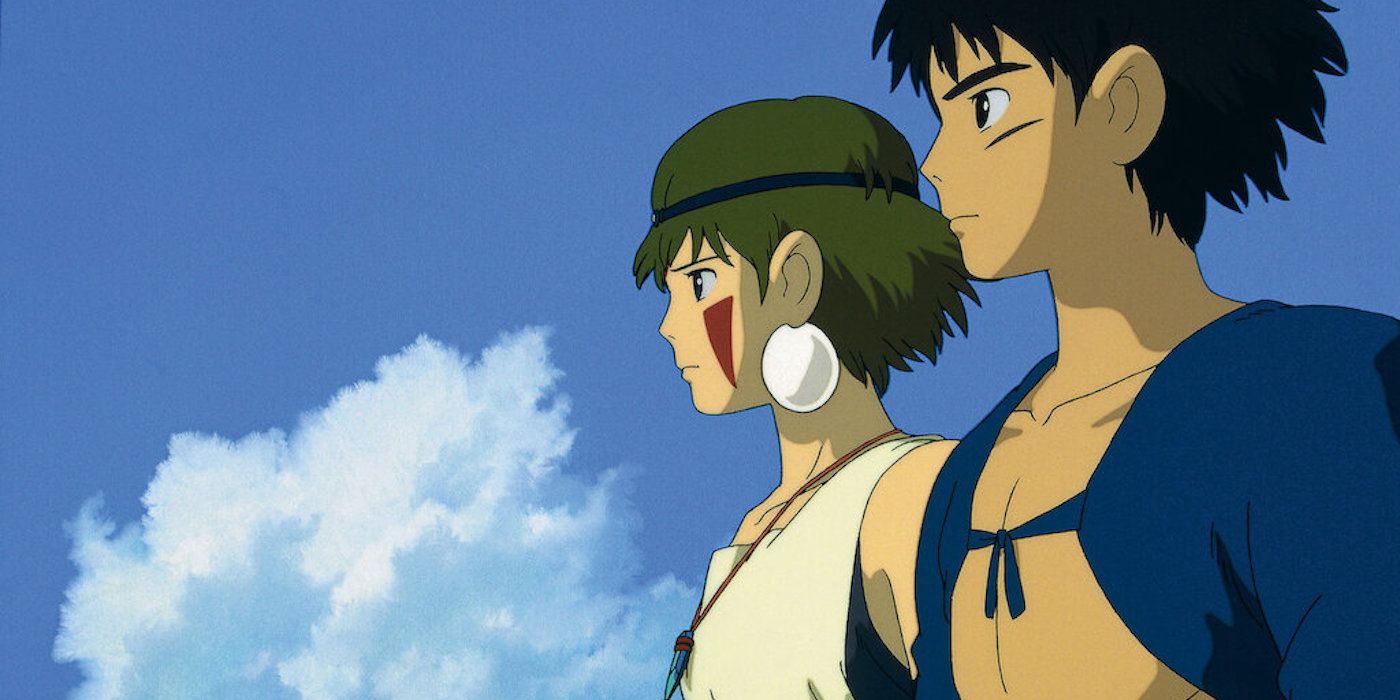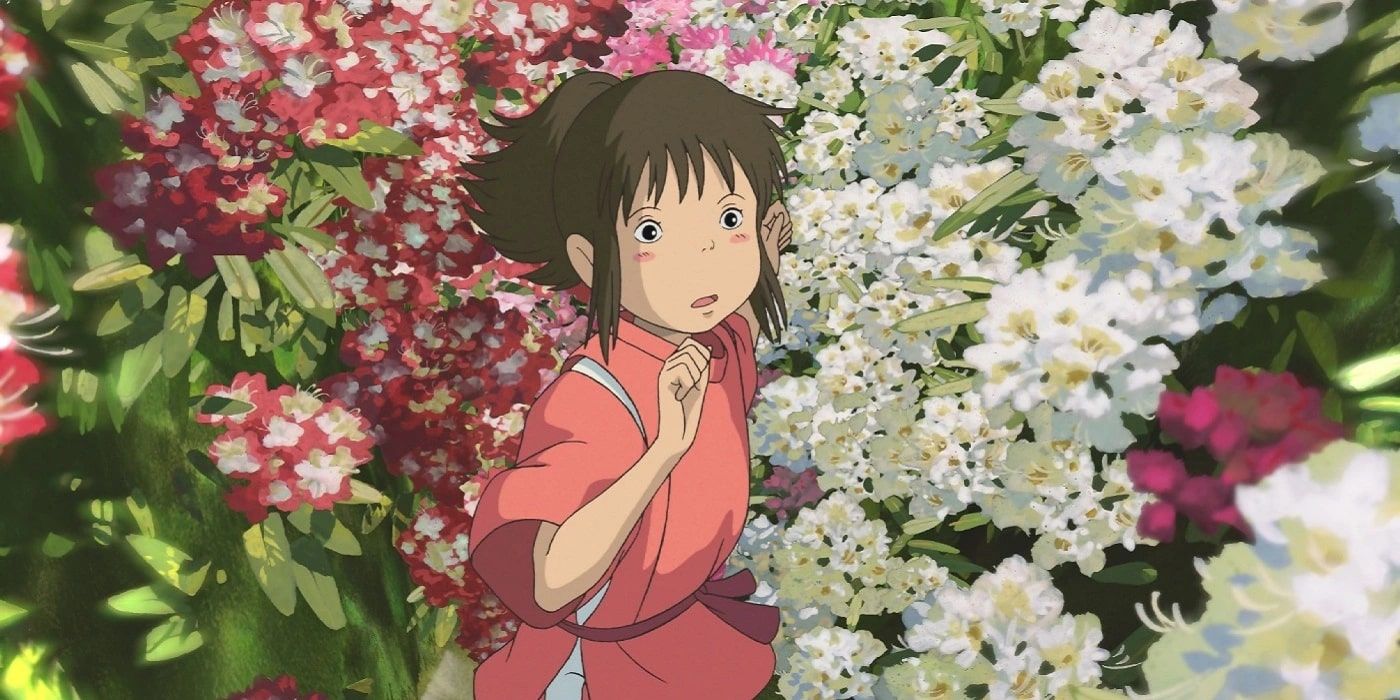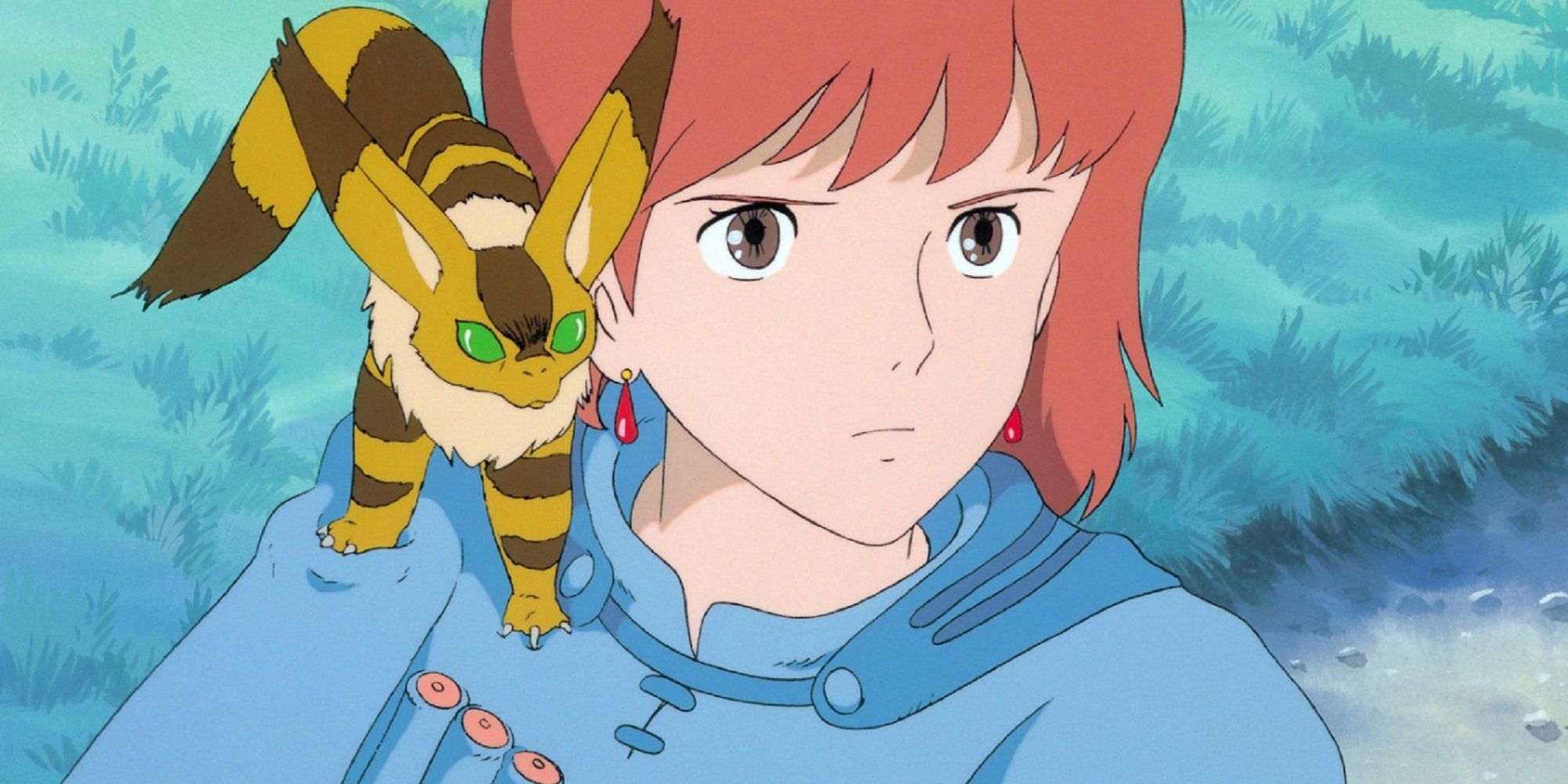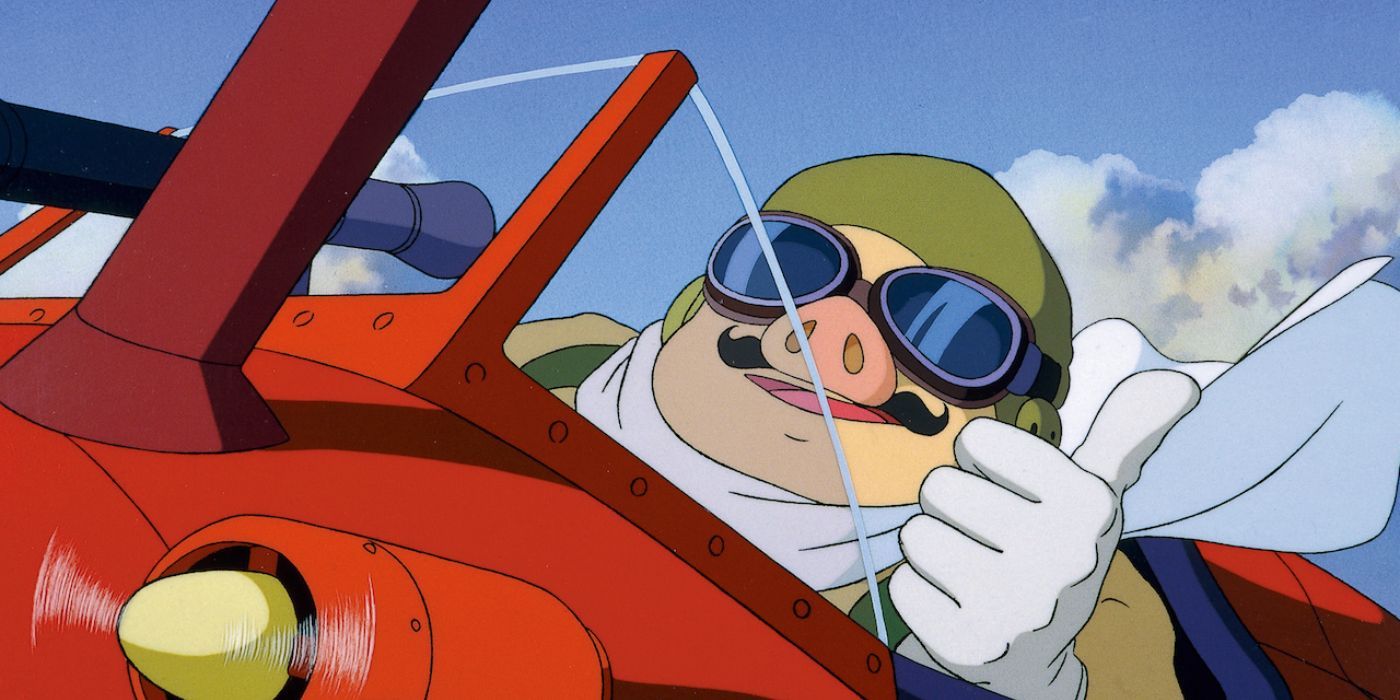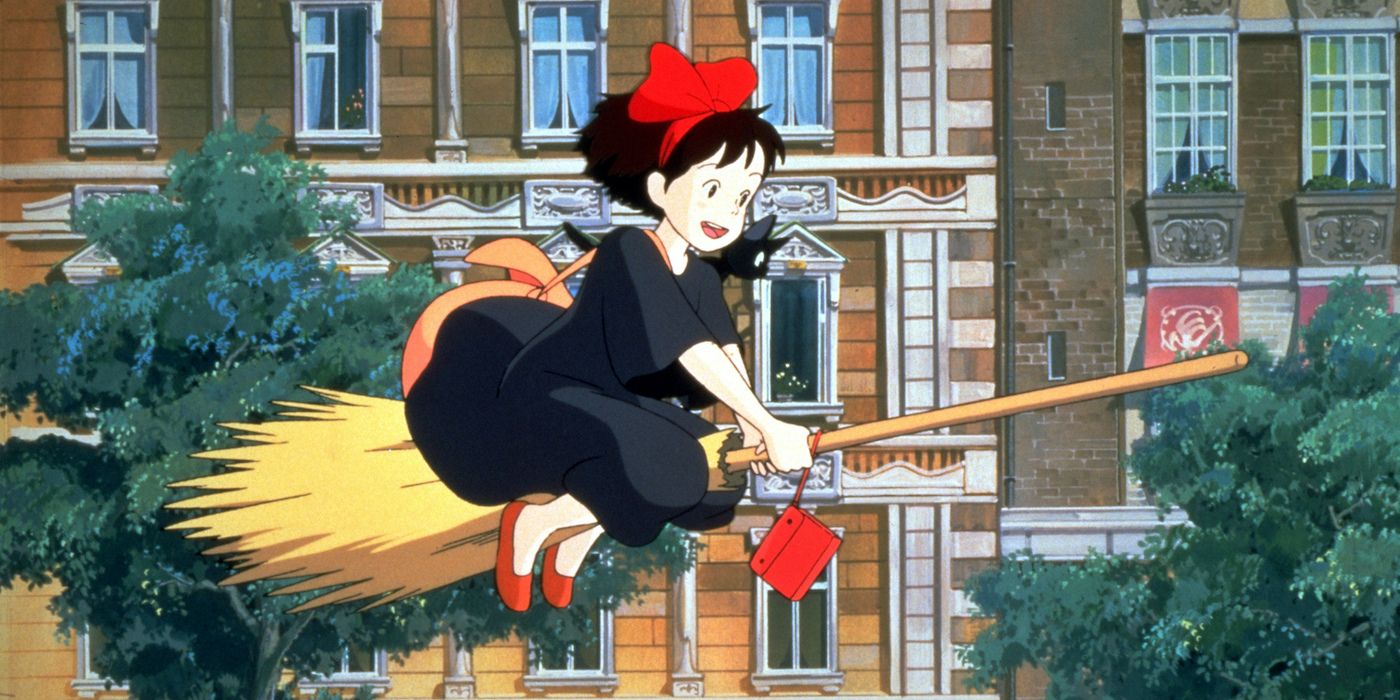Studio Ghibli is arguably the most beloved international animation studio in the world. Their films, especially those directed by co-founder Hayao Miyazaki, have given us unusual settings, animation that outclasses several English-language studios, and unforgettable characters. Whether they bring us wacky sidekicks, a few good villains, or remarkably strong heroes, Studio Ghibli’s characters stick with their audience for years.
In particular, the films of Studio Ghibli have protagonists that are either ordinary people just trying to get by, like in Only Yesterday, extraordinary beings dealing with their humanity, like in Kiki’s Delivery Service, or children discovering the true magic of the world around them, like in the recent The Boy and the Heron. Since the films of Ghibli deal with themes such as the pains of growing up, finding your place in the world, or looking back to understand the future, their characters are endlessly relatable and compelling. These are Studio Ghibli’s best protagonists, ranked by how memorable, engaging, three-dimensional, and outright entertaining they are.
10 Ponyo – ‘Ponyo’ (2008)
Voiced by Yuri Nara/Noah Cyrus
Before adopting her more famous name, Brunhilde (Yuri Nara/Noah Cyrus) was a little fish raised by a misanthropic underwater wizard named Fujimoto (George Tokoro/Liam Neeson). One day, she breaks away from her sisters and floats ashore to a fishing town, coming across a young boy named Sōsuke (Hiroki Doi/Frankie Jonas), who names her Ponyo and befriends her. Once she’s taken back to the ocean, she decides to use some of her father’s magic to make herself human, with consequences that result in pure environmental chaos.
Ponyo is seen by many as far more directly aimed at children than Ghibli’s other output. Thus, it becomes less about how Ponyo herself grows as a person (apart from literally growing into a person) and more about the effect she has on others. Ponyo’s mere presence and influence in the environment lead Sosuke’s family to become closer, and her father reconsiders his hatred of humans. Ponyo is not the typical little mermaid, but much like Ariel, she’s got a strong enough will that she’ll defy the odds to be a part of the human world.
Watch on Max
9 Seita & Setsuko Yokokawa – ‘Grave of the Fireflies’ (1988)
Voiced by Tsutomu Tatsumi/Adam Gibbs & Ayano Shiraishi/Emily Neves
Set during WW2, Grave of the Fireflies is infamously Ghibli’s darkest film to date. Seita (Tsutomu Tatsumi/Adam Gibbs) and Setsuko (Ayano Shiraishi/Emily Neves) look back on the last few months of their life, beginning with the death of their mother and the bombing of their home. As they try to survive the increasingly desolate state of post-war Japan, Setsuko begins to see the harsher parts of reality, and Seita begins to lose his sanity.
Although Grave of the Fireflies is not quite an anti-war movie, it’s not very hard to see why many people have declared it as such. Seita & Setsuko are children put through a war they didn’t start or even understand. Setsuko is an innocent little girl who is forced to go through unimaginable horror, while Seita is a teenage boy forced to mature overnight while knowing he probably won’t make it to adulthood. It’s no secret they meet a tragic end, with the only consolation being that they are together with the fireflies in the afterlife.
Watch on Netflix
8 Mahito Maki – ‘The Boy and the Heron’ (2024)
Voiced by Soma Santoki/Luca Padovan
After his mother’s tragic death, Mahito (Soma Santoki/Luca Padovan) moves to the countryside and struggles to accept his new pregnant stepmother and adapt to life at school. After an incident where he injures himself, he runs afoul of a talking Heron (Masaki Suda/Robert Pattinson), who takes him on an adventure through several magical kingdoms with the promise of seeing his mother again. What follows is an almost perfect animated odyssey where Mahito meets larger-than-life creatures and develops deeper connections with his family.
Mahito is, much like other Studio Ghibli creations, a character inspired by Miyazaki’s childhood: a young boy forced to leave his home with a father employed to build fighter planes and a strong emotional connection to his now-deceased mother. Mahito is understandably full of grief and resentment of his circumstances, but as the events progress, he learns to embrace them since while there is dysfunction, there is also love. Mahito is Ghibli’s most introspective protagonist, but that only makes him more fascinating and compelling.
Watch on Max
7 Satsuki & Mei Kusakabe – ‘My Neighbour Totoro’ (1988)
Voiced by Noriko Hidaka/Dakota Fanning & Chika Sakamoto/Elle Fanning
While the title character is one of the most beloved in animated history, My Neighbor Totoro wouldn’t be the same without the human protagonists. Satsuki (Noriko Hidaka/Dakota Fanning) and Mei (Chika Sakamoto/Elle Fanning) are two young girls who move with their father to the countryside to be closer to their recovering mother. Soon, the two discover that their new home and the surrounding land are populated by mysterious spirits, led by a large, rabbit-like creature the girls call Totoro (Hitoshi Takagi/Frank Welker).
While Seita and Setsuko represent what children go through during times of hardship in a world that doesn’t care for their lives, Satsuki and Mei represent enduring innocence in a far more peaceful (though not entirely less chaotic and hard) world. The story of My Neighbour Totoro isn’t so much a showcase for character growth as much as it is a representation of a specific area of childhood, where children are allowed a temporary escape from the more stressful and scary parts of life. Satsuki and Mei embody that to a tee, viewing their new home with wonder, mischief, and fun.
6 Sophie – ‘Howl’s Moving Castle’ (2004)
Voiced by Chieko Baisho/Emily Mortimer & Jean Simmons
Howl’s Moving Castle takes place in a world where magic and steampunk-esque technology work side by side. Poor young hatmaker Sophie Hatter (Chieko Baisho/Emily Mortimer & Jean Simmons) finds herself transformed into an old lady by a mean witch. Seeking to break the curse, she decides to find a young wizard named Howl (Takuya Kimura/Christian Bale) and becomes his cleaning lady. All the while, Howl tries to stop a destructive war from blowing out of control.
Sophie begins her story as a deeply insecure young woman. Owing to what seems to be her destiny as a poor hatmaker, she’s initially mousy, quiet, and reserved in the company of others. When transformed into an older woman, Sophie gains the confidence and attitude to match it, growing a spine and realizing her true potential. Many say age begets wisdom and strength, but Sophie got it faster than she ever anticipated. A classic coming-of-age story, Howl’s Moving Castle features a tender depiction of growing old, making Sophie a universally relatable figure with a timeless quality.
5 Ashitaka & San – ‘Princess Mononoke’ (1997)
Voiced by Yōji Matsuda/Billy Crudup & Yuriko Ishida/Claire Daines
Set almost 500 years ago, Princess Mononoke begins with a young prince named Ashitaka (Yōji Matsuda/Billy Crudup). Cursed by a demon after saving his village, he travels west to follow the trail of destruction the demon left behind. While the curse has granted him superhuman strength, it will also kill him if he doesn’t find a cure. Eventually, he becomes embroiled in a war between humans, spirits, and samurai, finding a connection with a warrior girl raised by wolves.
Ashitaka may be the viewpoint character of the film, but San (Yuriko Ishida/Claire Daines) certainly deserves recognition as the film’s co-lead. Ashitaka is a human prince trying to stop a war by proving violence won’t solve anything. San is a girl adopted by a wolf goddess with a hatred of humans, adopting a persona as a spirit of vengeance. The two are fundamentally different beings, but neither can resolve the film’s central conflict without the other.
4 Chihiro/Sen Ogino – ‘Spirited Away’ (2001)
Voiced by Remi Hiiragi/Daveigh Chase
One of two Ghibli films to win an Oscar, Spirited Away revolves around Chihiro (Remi Hiiragi/Daveigh Chase), a 10-year-old girl who travels with her family to a new neighborhood. They come across an abandoned village where her parents greedily eat from an old restaurant and are promptly transformed into pigs. Realizing this realm is inhabited by spirits and Yokai, Chihiro must give up her freedom, future, and even her name if she wants to have a chance at saving her parents, but much to her relief, she will not be alone.
Chihiro, or as she’s called throughout the film, Sen, is in many respects a modern answer to a classic fantasy archetype: a young girl thrown headfirst into a world where the rules of reality do not make sense. She must rely on her wit, bravery, and the occasional help of a friend to set things right, get back home, and maybe save her loved ones along the way. Chihiro begins as somewhat whiny and spoiled but goes through an experience that makes her a braver, more understanding, and overall more capable person.
Watch on Max
3 Nausicaä – ‘Nausicaä of the Valley of the Wind’ (1984)
Voiced by Sumi Shimamoto/Alison Lohman
Nausicaä (Sumi Shimamoto/Alison Lohman) is a girl in a post-apocalyptic society overrun with giant insectoids. But rather than trying to destroy them for humanity to survive, Nausicaä tries to find a way for both species to share the planet together. Unfortunately, not everyone is as inclined to have as peaceful a transition as she wants, and she will face some dire consequences.
Nausicaä of the Valley of the Wind was made two years before the official founding of Studio Ghibli, but because it was still directed by Ghibli co-founder Miyazaki, it is often considered one of Ghibli’s most rewatchable and essential movies. In many respects, it helped form a large part of Ghibli’s identity, with breathtaking animation, themes of environmental protection, and a strong protagonist in the form of its title character. Nausicä paved the way for Ghibli’s future protagonists, being a deeply compassionate girl who is willing to do anything, even take down a military empire, to save her world.
Watch on Max
2 Porco Rosso – ‘Porco Rosso’ (1992)
Voiced by Suichiro Moriyama/Michael Keaton
In post-WW1 Italy, Porco Rosso (Shūichirō Moriyama/Michael Keaton) is an ex-fighter pilot cursed to have the face of a pig. Unlike most fictional characters stuck in this circumstance, Porco Rosso is in no hurry to try and reverse the curse. Harboring a cynical attitude towards humanity, he makes ends meet by engaging in freelance bounty hunting against pirates that rule the air, not the sea. Porco Rosso follows his fight against the pirates and the fascist government pursuing him, but can the few friends he’s got change his perception of the world?
Unlike most Ghibli protagonists, Porco is decidedly not a naive adventurer by an older gentleman who’s already comfortable where he is and is far from the softest guy in the room. He’s grumpy, cynical, and even a little sexist, but he still ultimately has a good heart and will do the right thing if pushed enough (or paid enough). Porco is an extremely unique kind of protagonist for an animated film with such a romantic tone and one of Ghibli’s most distinctive and refreshing heroes.
Watch on Max
1 Kiki – ‘Kiki’s Delivery Service’ (1989)
Voiced by Minami Takayama/Kirsten Dunst
Many Ghibli protagonists fit the archetype of a young person dealing with growing up and finding their place in the world, but no direct protagonist has managed such a balance between extraordinary or relatable as much as Kiki (Minami Takayama/Kirsten Dunst). She begins the film as a thirteen-year-old witch sent into the world with nothing but a bag, a broom, her father’s radio, and her talking pet cat for a year of independence.
Kiki decides to start a delivery service but soon realizes growing her little business is going to be harder than she thought. Kiki’s Delivery Service is a story about a witch in the real world. However, without her broom and cat, Kiki is just like many other kids, finding wonder and joy in the world around her but also prone to self-doubt and emotional vulnerability. She has a few extra touches that make her extraordinary, but Kiki is Ghibli’s most relatable and engaging protagonist.
Watch on Max


